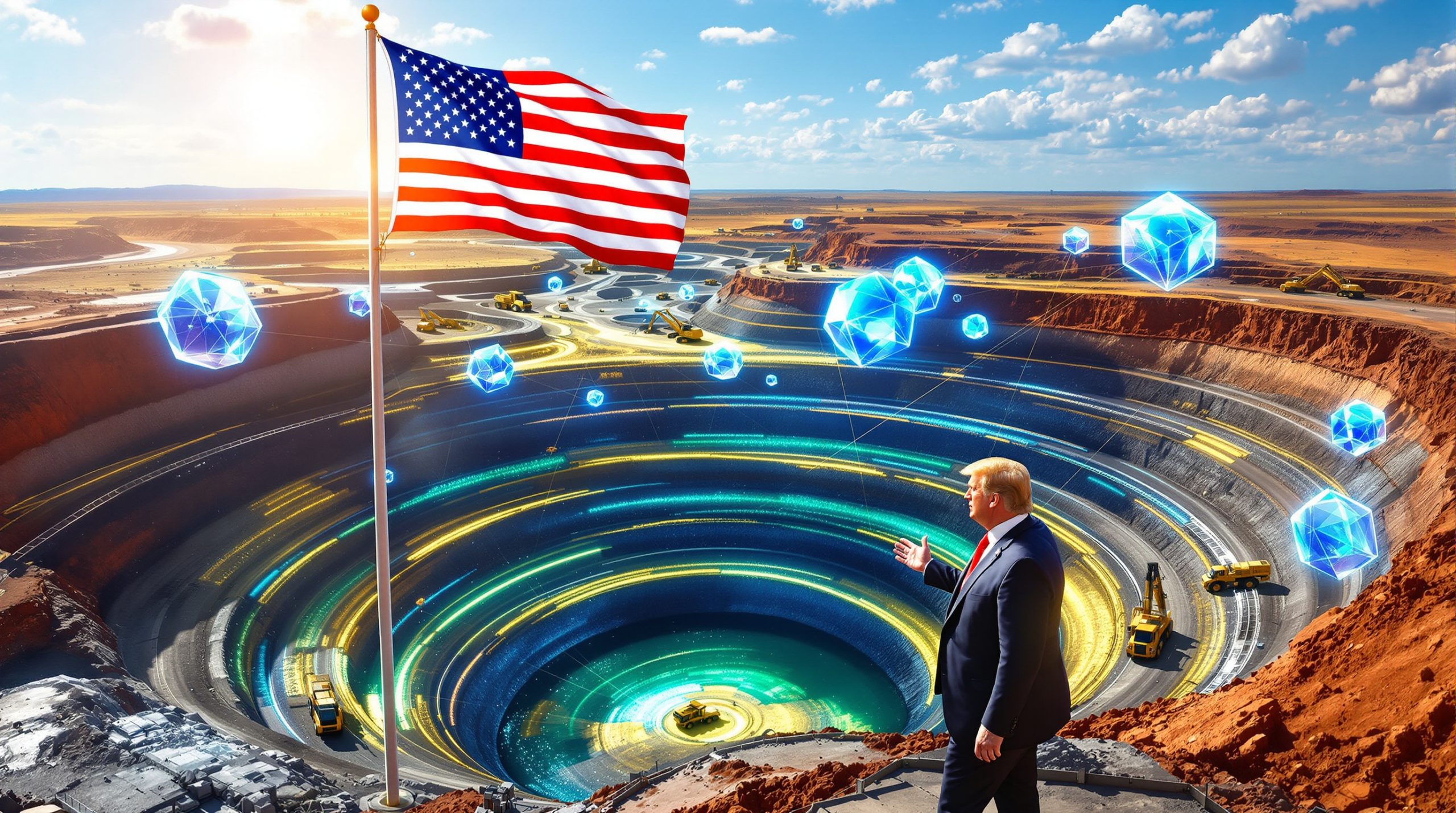Mining Leadership Evolution in the Modern Era
The mining industry has witnessed a transformation in leadership styles over the past century, evolving from the oligarchic power structures of historical figures to today's regulated corporate environments. The term Bristow and Froneman modern-day randlords has emerged to describe contemporary executives who demonstrate characteristics reminiscent of the legendary Randlords while operating within vastly different frameworks. Furthermore, these leaders maintain the entrepreneurial boldness that drives the mining industry evolution in today's complex business environment.
Contemporary mining leadership requires a unique combination of strategic vision, operational excellence, and stakeholder management capabilities. Leaders must navigate complex geopolitical environments while delivering consistent shareholder returns and maintaining social license to operate. In addition, the most successful executives demonstrate unwavering commitment to their strategic vision, often displaying direct communication styles that prioritise results over diplomatic considerations.
Key characteristics defining modern mining leadership include:
• Aggressive expansion into challenging international jurisdictions
• Strategic consolidation through targeted mergers and acquisitions
• Operational discipline focused on margin optimisation
• Ability to create substantial shareholder value during commodity cycles
• Willingness to make contrarian investment decisions in high-risk environments
The regulatory landscape today requires mining executives to balance traditional operational focus with comprehensive compliance frameworks. Unlike their historical counterparts who wielded direct political influence, contemporary leaders must work within democratic institutions while advocating for industry interests through established channels.
The Randgold Resources Phenomenon and Global Gold Transformation
Mark Bristow's career exemplifies the evolution of South African mining expertise on the international stage. His transformation of Randgold Resources from a single Mali asset into a million-ounce annual producer over more than two decades demonstrates the patient resource development approach typical of geologically-trained executives.
The company became the London Stock Exchange's premium African gold investment, generating exceptional returns for UK investors throughout multiple commodity cycles. Moreover, Bristow's disciplined approach to resource development and operational excellence established new benchmarks for African mining operations, particularly in challenging jurisdictions across West Africa.
Randgold Resources Key Achievements:
| Metric | Performance |
|---|---|
| Production Growth | Single asset to 1M oz annually over 20+ years |
| Market Position | LSE's premium gold stock |
| Geographic Expansion | Successfully operated in Mali, Burkina Faso, DRC |
| Investor Returns | Consistent dividend payments through commodity cycles |
The 2019 merger with Barrick Gold, valued at approximately $6.1 billion, created the world's largest gold producer and marked the end of an era for London-based investors. This transaction demonstrated Bristow's ability to execute transformational deals while maintaining operational focus, reflecting broader industry consolidation trends across the sector.
Bristow's leadership style reflected his geological background, emphasising systematic resource evaluation and long-term value creation over short-term market pressures. His commitment to operational excellence in challenging African jurisdictions established credibility that enabled access to capital markets during periods of political uncertainty.
The unexpected nature of Bristow's September 2025 resignation surprised industry observers, particularly given his previous statements about continuing until 2027. When asked about retirement speculation in 2024, he had dismissed such reports emphatically, making his departure more significant within the context of generational change in mining leadership.
Froneman's Entrepreneurial Mining Strategy
Neal Froneman's approach to mining leadership contrasted sharply with traditional resource development methodologies. As a mining engineer by training, he demonstrated preference for rapid consolidation and strategic acquisitions over patient geological exploration, earning recognition as a transformative industry figure.
His entrepreneurial journey began with Uranium One, which he built into one of the four largest uranium producers globally before encountering operational challenges. Consequently, this experience informed his subsequent approach at Gold One, which evolved into Sibanye-Stillwater and became the world's largest platinum group metals producer.
Froneman's Strategic Evolution:
• Uranium One: Built into top-four global uranium producer
• Gold One/Sibanye Formation: Created focused South African gold producer (circa 2013)
• Stillwater Mining Acquisition: Expanded into North American PGM operations (2017)
• Diversification Strategy: Integrated recycling capabilities and battery metals exposure
Industry observers characterised Froneman as clever, ruthless and lucky, reflecting his ability to identify undervalued assets and execute transformational acquisitions. His aggressive consolidation strategy attracted criticism from some quarters, with detractors labelling him the Pac-Man of the industry due to his appetite for strategic deals.
Froneman's departure from Sibanye-Stillwater on September 30, 2025, occurred just one day after Bristow's resignation from Barrick, highlighting the simultaneous conclusion of two distinctive leadership approaches. His outspoken views on South African political and economic conditions reflected his willingness to address challenging topics that other executives might avoid.
The timing of these departures suggests broader generational transition within the mining industry, as leaders who emerged from the post-apartheid transformation of the 1990s step aside for executives with different backgrounds and approaches to stakeholder engagement.
The Randgold & Exploration Legacy Network
The influence of Randgold & Exploration, incorporated in 1992, extended far beyond individual executive careers to create a network of transformative mining leaders. Furthermore, this network revolutionised South African operations through lean management and margin optimisation strategies that continue to influence modern approaches.
This entity emerged from the transformation of Rand Mines, South Africa's oldest mining company, implementing a devolved structure that eliminated expensive head office overheads. However, the approach emphasised entrepreneurial management and operational efficiency over traditional corporate hierarchies.
Key Alumni and Their Achievements:
| Executive | Company | Achievement |
|---|---|---|
| Bernard Swanepoel | Harmony Gold | Transformed into 1M+ oz gold producer |
| Mark Bristow | Randgold Resources | Built premium LSE African gold stock |
| Neal Froneman | Sibanye-Stillwater | Created world's largest PGM producer |
| Jan Nelson | Pan African Resources | Developed focused African gold operations |
Bernard Swanepoel's leadership at Harmony Gold exemplified the Randgold & Exploration approach, transforming the company through strategic acquisitions and operational improvements. His mentorship of both Froneman and Jan Nelson created a pipeline of executive talent that would influence mining leaders trends for decades.
The Randgold & Exploration boardroom included colourful personalities beyond the core executive team, with Brett Kebble serving as commercial director and Roger Kebble leading DRD operations. This environment fostered entrepreneurial thinking while maintaining focus on operational results and shareholder value creation.
The network's emphasis on margin optimisation and lean operations reflected awareness that the Witwatersrand Basin's geological advantages would require more efficient extraction methods to remain competitive. This forward-thinking approach enabled South African mines to compete globally despite increasing operational challenges.
Industry Leadership Transitions and Global Context
The simultaneous departure of Bristow and Froneman coincided with broader leadership changes across major mining companies, including Newmont's replacement of Tom Palmer with South African metallurgist Natascha Viljoen. These transitions suggest industry-wide generational change rather than isolated executive decisions.
Mining sector CEO turnover increased to 15.1% in 2023 from 14% the previous year, according to Bedford Group analysis, indicating broader instability in executive ranks. However, the gold sector's leadership changes proved particularly surprising given strong market conditions that typically provide executive security.
Recent Leadership Changes:
• Barrick Gold: Mark Bristow resignation (September 29, 2025) with no succession plan
• Sibanye-Stillwater: Neal Froneman departure (September 30, 2025)
• Newmont: Tom Palmer replaced by Natascha Viljoen
• Industry Trend: Multiple takeover attempts by South African CEOs for Canadian assets
The pattern of South African executives pursuing Canadian mining assets has created tension within North American mining circles. Vancouver's Teck Resources faced takeover attempts from both Glencore and Anglo American leadership, with analysts suggesting the Anglo bid has strong probability of success.
Canadian mining publications have expressed frustration with South African leadership approaches, with some characterising executives as overly aggressive in their communication styles. Consequently, this cultural clash reflects different business traditions and stakeholder engagement approaches between mining jurisdictions.
Operational Excellence and Communication Styles
Both Bristow and Froneman demonstrated direct communication approaches that prioritised clarity over diplomatic considerations. Their willingness to address challenging topics publicly, whether regarding M&A strategy or political conditions, distinguished them from more cautious executive approaches that characterise Bristow and Froneman modern-day randlords.
Bristow's response to merger and acquisition alignment questions exemplified this directness. When asked about board agreement on strategic direction, he stated they were completely aligned, adding that the alignment reflected his personal vision rather than compromise positions.
Distinctive Communication Characteristics:
• Uncompromising Strategic Vision: Clear articulation of long-term objectives without hedging
• Direct Market Commentary: Willingness to address controversial topics publicly
• Results-Focused Messaging: Emphasis on operational achievements over stakeholder relations
• Personal Accountability: Taking direct responsibility for strategic outcomes
Froneman's commentary on South African political and economic conditions demonstrated similar directness, describing the country as being on a knife edge. Such statements reflected willingness to address challenging realities that other executives might avoid for diplomatic reasons.
The effectiveness of these communication styles in achieving business objectives contrasts with contemporary emphasis on stakeholder consultation and collaborative decision-making processes. Their approaches reflected confidence in personal judgment and strategic vision over consensus-building methodologies.
Industry observers noted that both executives shared an ability to be blunt even when discretion might serve their purposes better. This suggests that authentic communication formed part of their leadership effectiveness rather than representing communication failures.
Modern Mining's Regulatory and Stakeholder Environment
Contemporary mining operations occur within fundamentally different regulatory frameworks compared to the environments that produced historical Randlords. Environmental, social, and governance considerations now drive strategic decision-making processes, requiring leaders to balance operational excellence with comprehensive compliance requirements.
Modern executives must navigate complex stakeholder expectations including community engagement, environmental impact management, and transparent governance practices. Furthermore, these requirements represent significant evolution from the autocratic decision-making capabilities that characterised earlier mining leadership generations, driving the need for sustainability transformation initiatives.
Current Regulatory Requirements:
• Environmental Compliance: Comprehensive impact assessment and mitigation strategies
• Social License: Community engagement and benefit-sharing agreements
• Governance Transparency: Regular stakeholder reporting and accountability mechanisms
• Climate Commitments: Carbon reduction targets and renewable energy integration
The shift toward stakeholder capitalism requires mining leaders to demonstrate competency in areas beyond traditional operational and financial management. Technical expertise must be complemented by understanding of social dynamics, environmental science, and regulatory compliance frameworks.
Technology integration has become essential for maintaining competitive advantages, with digital transformation affecting everything from exploration techniques to processing optimisation. In addition, modern leaders must evaluate and implement technological solutions while managing traditional operational challenges and implementing natural capital operations frameworks.
Future Implications for Mining Leadership
The departure of executives like Bristow and Froneman signals transition toward leadership models that integrate traditional mining expertise with contemporary governance requirements. Future success will likely require collaborative stakeholder engagement approaches while maintaining operational discipline and strategic vision.
Emerging leaders must combine geological and engineering fundamentals with digital transformation capabilities, ESG specialisation, and global business experience. However, the industry's maturation suggests that purely entrepreneurial approaches may require modification to accommodate stakeholder expectations and regulatory requirements.
Evolving Leadership Requirements:
• Technical Innovation: Integration of digital technologies and automation systems
• Stakeholder Management: Collaborative engagement with communities and investors
• Sustainability Focus: Environmental stewardship and climate adaptation strategies
• Diversity Integration: Inclusive leadership and varied professional backgrounds
The question of whether modern Randlord characteristics remain relevant depends on the industry's ability to adapt entrepreneurial boldness to contemporary operating environments. Value creation capabilities and strategic vision remain essential, but delivery methods must evolve to meet current stakeholder expectations.
Mining companies will likely seek executives who can maintain operational excellence and shareholder value creation while demonstrating competency in areas that were not traditionally part of mining leadership requirements. This evolution represents industry maturation rather than abandonment of fundamental business principles.
What Does the Future Hold for Mining Leadership?
The characterisation of Bristow and Froneman modern-day randlords reflects recognition that their generation emerged from unique historical circumstances that are unlikely to be replicated. Their post-apartheid South African background, combined with entrepreneurial training at Randgold & Exploration, created distinctive approaches to international mining leadership.
Their simultaneous departure marks conclusion of a leadership style characterised by direct communication, aggressive expansion strategies, and willingness to operate in challenging jurisdictions. While these capabilities remain valuable, future executives will likely need to combine such qualities with enhanced stakeholder engagement and governance competencies.
"The mining industry continues to require leaders capable of identifying and developing world-class assets while navigating complex geopolitical environments and creating substantial shareholder value through calculated risk-taking."
However, the delivery mechanisms for achieving these objectives must evolve to accommodate contemporary regulatory frameworks and stakeholder expectations. The entrepreneurial spirit that drives industry transformation remains essential, but its expression will likely adapt to current operating environments.
Rather than disappearing entirely, the modern Randlord model may be evolving to incorporate collaborative approaches while maintaining the strategic vision and operational excellence that characterises transformative mining leadership. The industry's future success depends on attracting executives who can bridge traditional mining expertise with contemporary governance requirements.
The impact of digital transformation in mining operations will likely reshape leadership requirements, demanding technical proficiency alongside traditional operational expertise. Consequently, the characteristics that made Bristow and Froneman modern-day randlords will evolve rather than disappear entirely.
This analysis is based on industry observations and publicly available information. Mining investments involve significant risks, and past performance does not guarantee future results. Readers should conduct their own research and consult qualified professionals before making investment decisions.
Want to Capitalise on the Next Mining Industry Leadership Transformation?
Discovery Alert delivers instant notifications about significant ASX mineral discoveries using its proprietary Discovery IQ model, helping investors identify transformational opportunities as leadership changes reshape the sector. Begin your 30-day free trial today to position yourself ahead of major developments that could mirror the success stories of executives like Bristow and Froneman.




